By Siraj Asfahani | June 2, 2016
Every morning this past month of May, I’ve mistakenly typed “mainst” into my laptop computer password field at work. Such an annoying occurrence — it was my old password from the laptop I had while working for the National Main Street Center so many years ago. But I know why I was doing it — it was that time of year!
May is the month of the National Main Streets Conference as it was called back in my day ( now titled the Main Street Now Conference), that annual gathering of Main Street advocates, missionaries and lovers of the true, traditional, walkable, and livable downtown. This conference holds special meaning for me, not only from the fact that I’ve attended 21 of them — first as a local Main Street manager, second as a state coordinator, then many tilts helping to organize the conference as an associate with the Main Street Center for more than ten years, and now as a consulting preservation planner — but mainly due to the fact the conference was returning to Milwaukee, the site of my first Main Street conference experience back in 1993. That 1993 conference was a heck of lot of fun and seriously inspirational – I was an ambitious and highly curious Main Street manager back then and I soaked in as much of the Main Street gospel as I could during those three days in Mil-town. Today, many of the Main Street folks I met at that conference have served as close colleagues, mentors and friends during my professional career. I’ve been so fortunate. I’m sure this conference would measure up or even exceed that hallowed one.
So I arrived in Milwaukee early on the morning of Saturday, May 21, to attend the annual meeting of the Main Street Architects and Economic Vitality specialists. Although I hadn’t attended the meeting in a few years, I know the group well from my prior days in organizing it when I worked for the Main Street Center. Saturday’s meetings consisted of several great tours — tours that showcased the power of preservation to transform places. The tours were definitely the highlights of the conference for me.
Our first stop was a near northwest side neighborhood where successful efforts by the local non-profit Walnut Way Conservation Corps have led to the outstanding rehabilitation of the former York Place Building, once a tavern and bowling alley, now housing a natural foods store, a juice place and the offices for the Milwaukee Center for Independence. The project was funded through several grants. While there, many of us in the tour group picked up a few items and refreshments from the foods store— a colleague bought a package of dried mangos, which were delicious. I purchased aloe-flavored water to quench my thirst. The York Place building rehab has turned out to be the impactful project the Conservation Corps had hoped it would be; it saved a distinctive Romanesque Revival-styled commercial building with businesses that provide local jobs and access to healthy foods and wellness services. Very nice job.
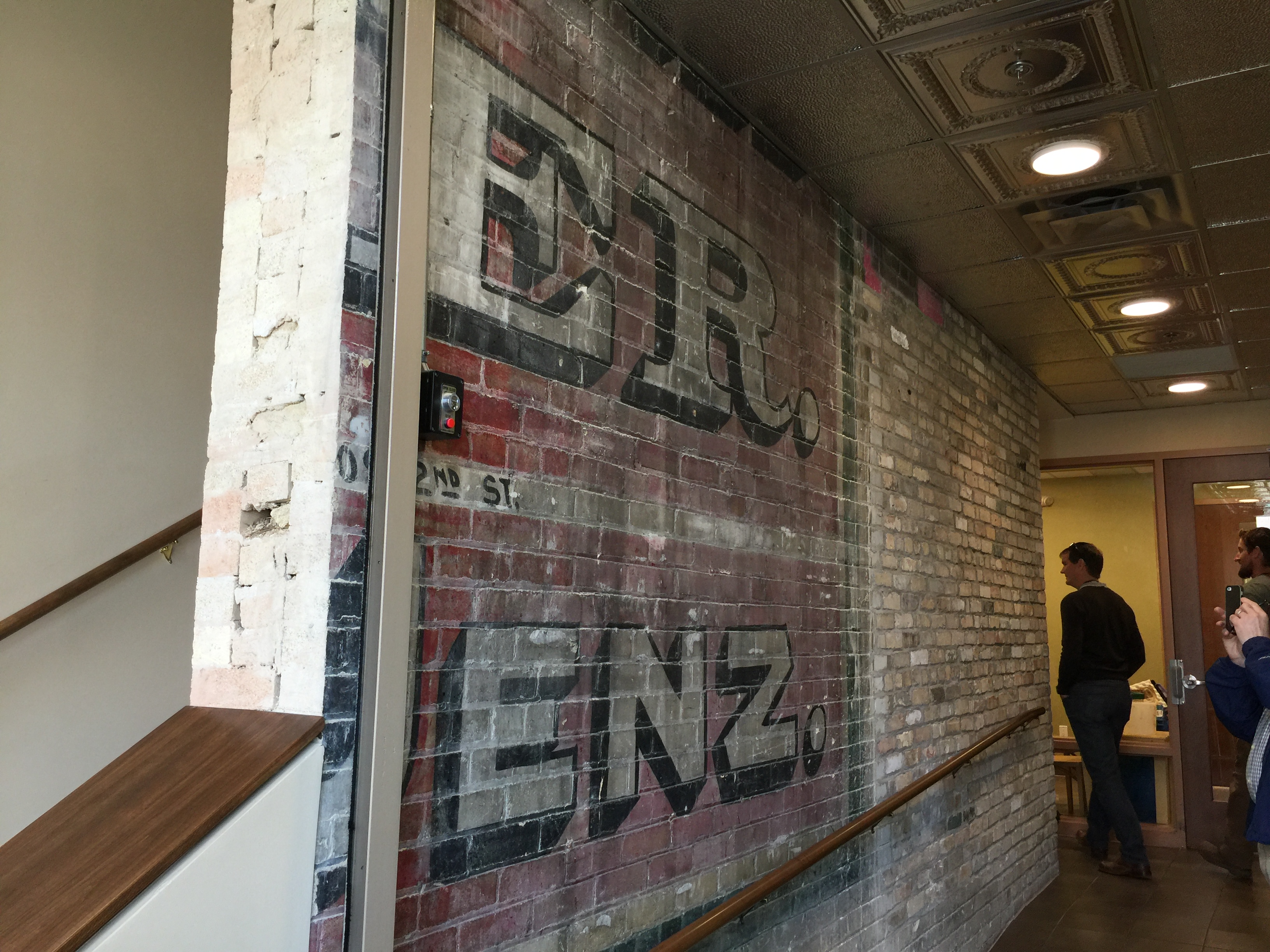
Ghost sign inside the rehabbed York Place Building.
Next on the tour was Milwaukee City Hall, built in 1895, designed in a monumental Flemish Renaissance Revival style, and without a doubt, one of the coolest City Halls in the country. I have many memories of looking up from the first floor through the building’s central light-filled atrium when I came to visit the Mayor’s Office for one our Main Street projects during my tenure at the Main Street Center. This time around, our group was given an exclusive tour of City Hall’s bell tower, with the real excitement of having the chance to ring the 22,500 pound bell, named “Solomon Juneau” after Milwaukee’s first mayor. Reaching the bell croft wasn’t too bad of a climb as several flights of spiral staircases led us to Solomon and incredible views of downtown Milwaukee. Solomon’s ringing is automated of course but our guide let several in our tour group take hold of the bell clapper to ring it manually. While I did not partake in the effort, it took several of my colleagues to hoist and ring the clapper. Once rung, the low “bung” chime reverberated in the croft like you wouldn’t believe. Milwaukee City Hall is a gem of a place — kudos to the City for restoring it several years ago and keeping it a Milwaukee icon for generations to come.
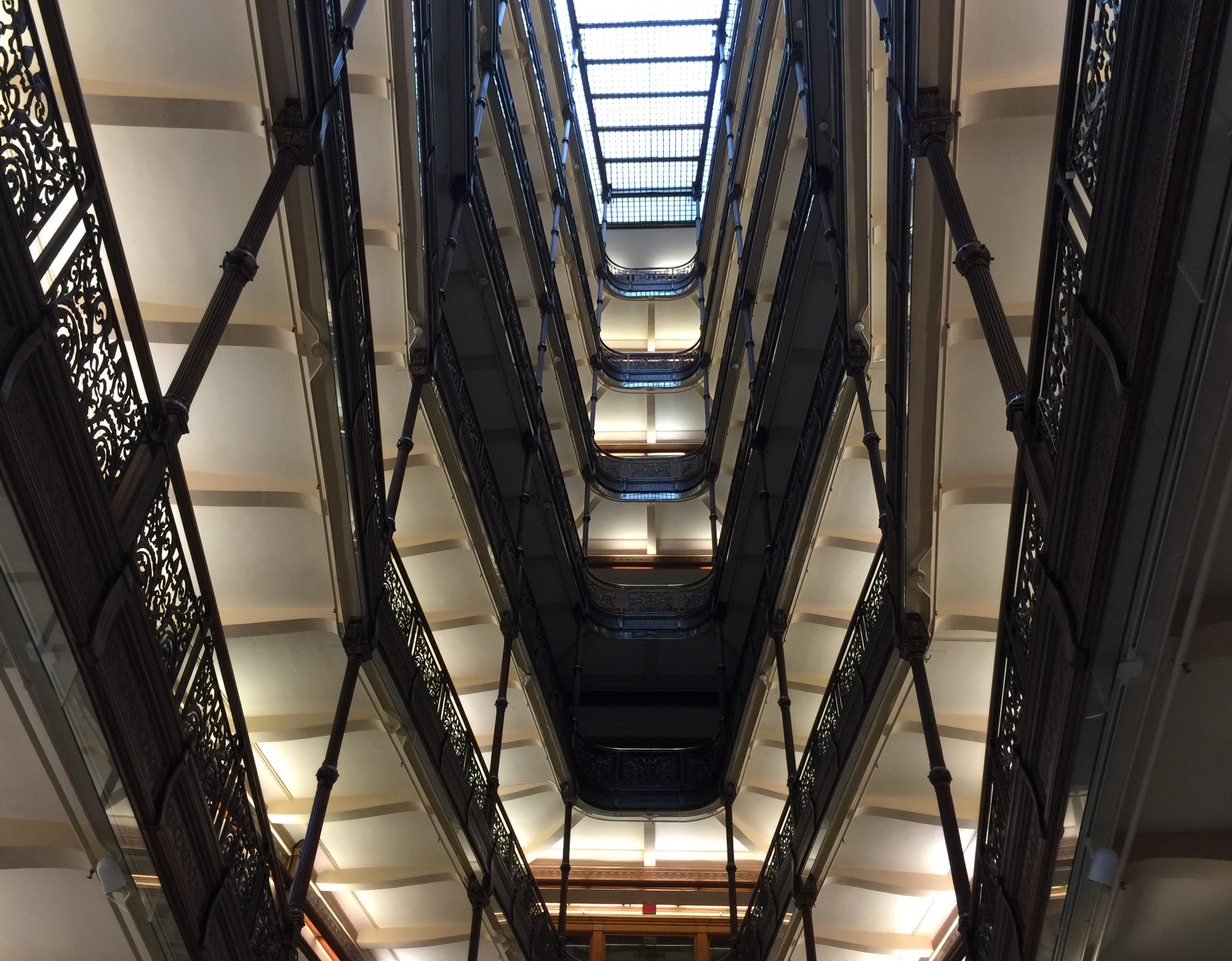
City Hall atrium.
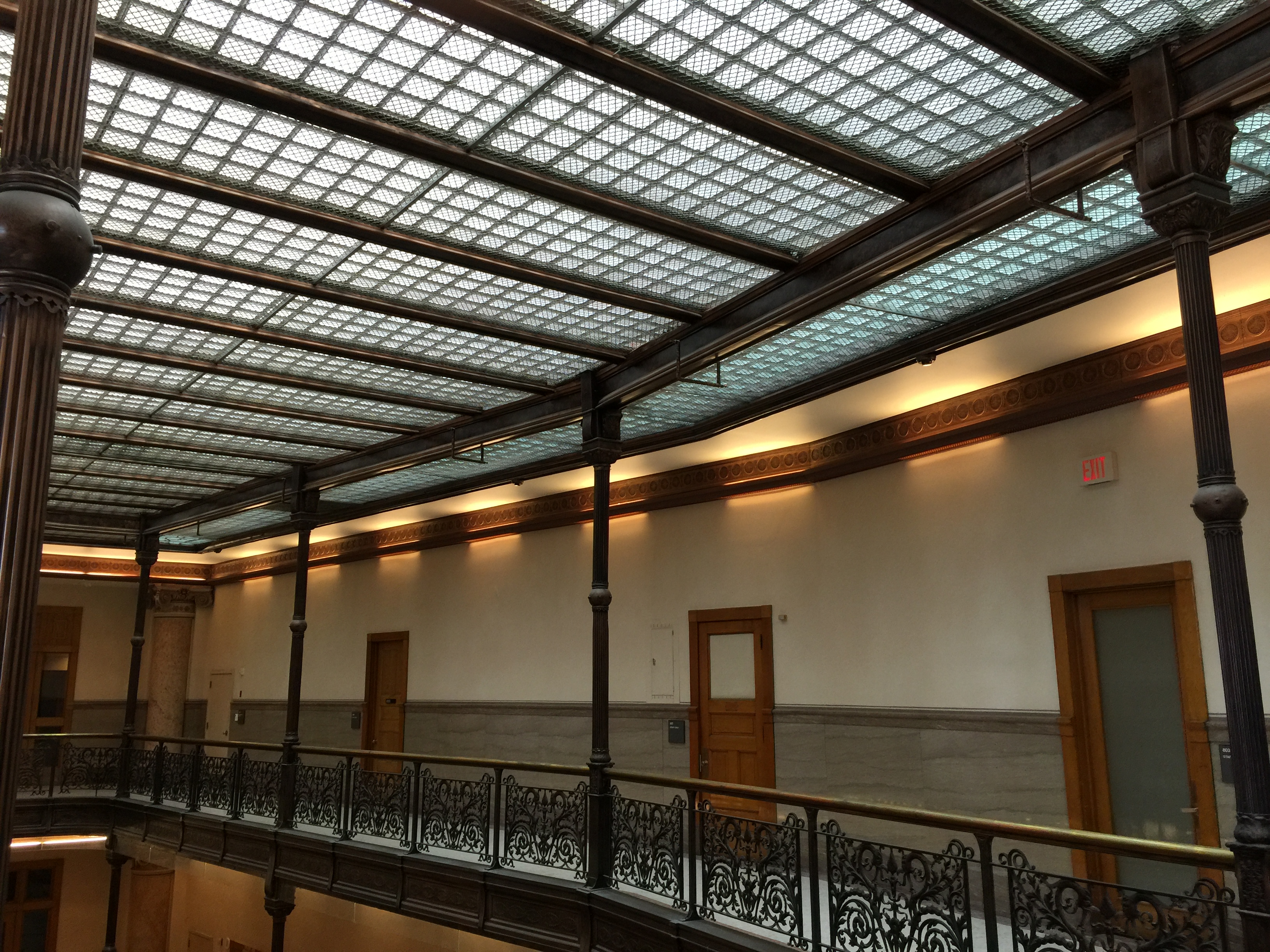
Top office floor view of atrium skylights.
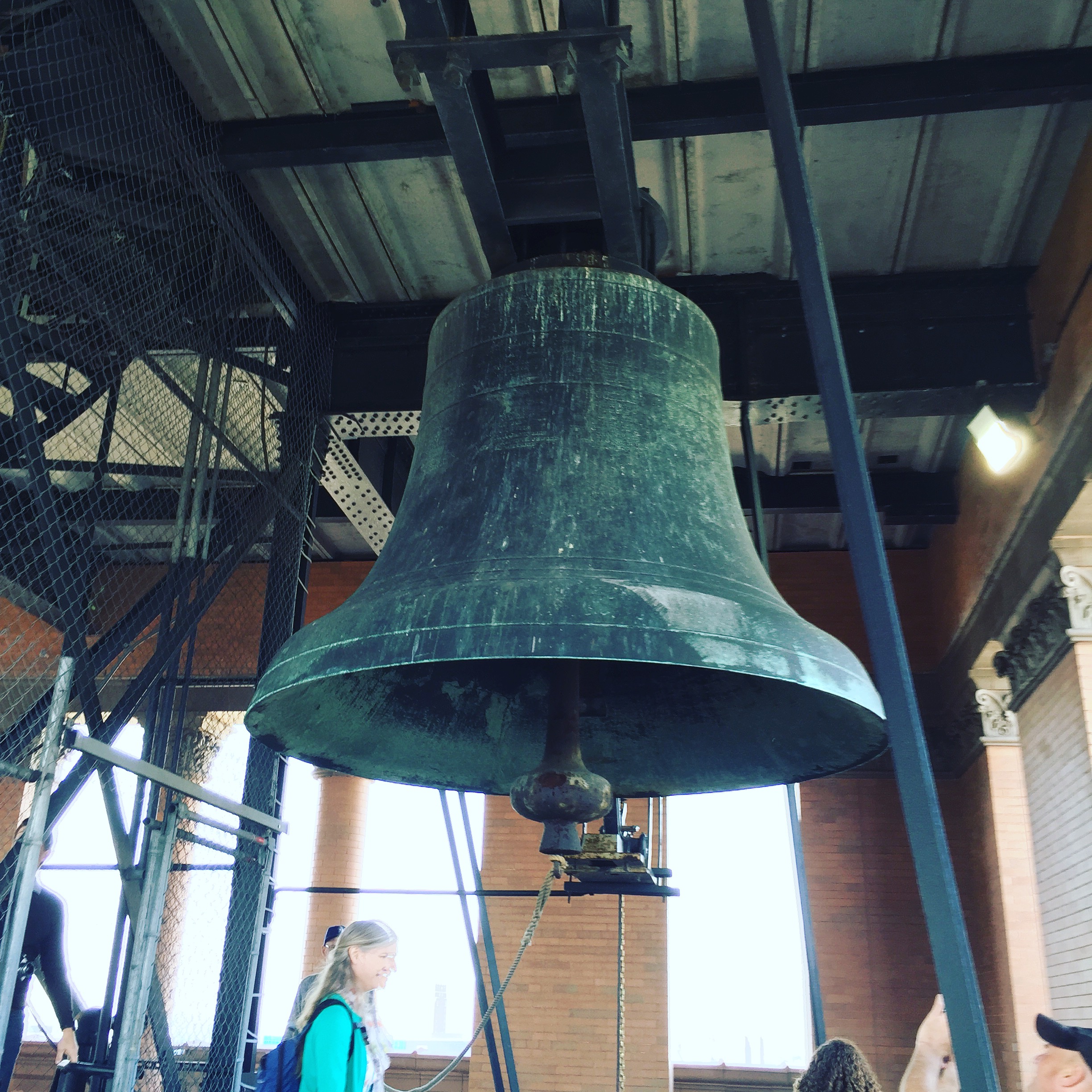
Solomon Juneau in all its glory.
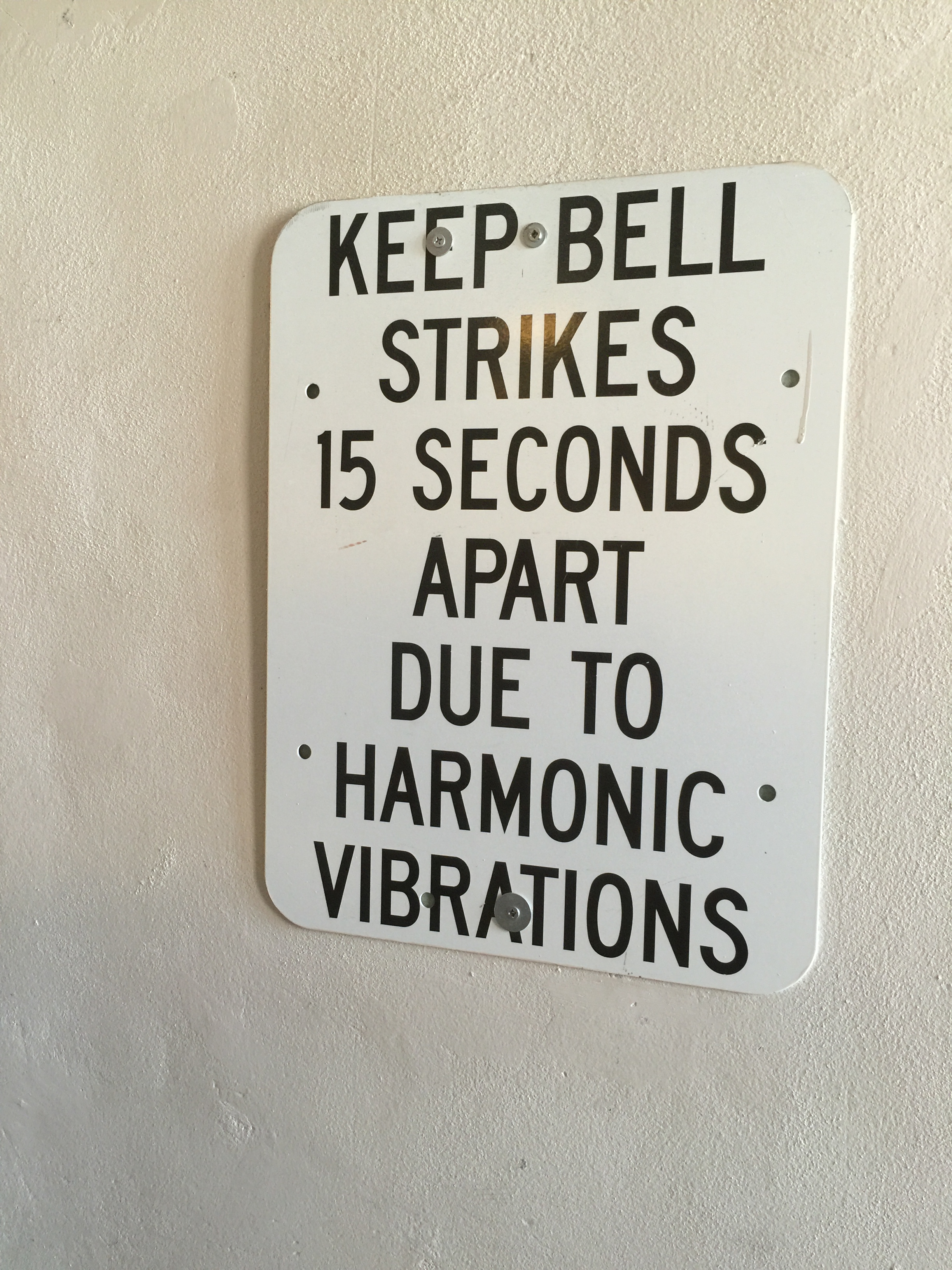
Beware of those vibrations.
Last on the tour was the awesome Pabst Brewery complex just northwest of the downtown. Over the years since the mid-1990s when Pabst stopped its PBR beer-making, several key buildings within the complex have been nicely adapted for new uses, including offices and facilities for two local college and universities, and the 90-room Pabst Brewhouse Inn and Suites — a stunning rehabilitation of the 1877 brick Italianate brewhouse into a boutique hotel. Spiral cast iron stairwells, arched doorways and the iconic copper brew kettles — the bottoms of which were removed when the building closed — were all original features that were retained as part of the rehab. The kettles’ top halves can be viewed on the second floor atrium with its copper gleaming from the light emanating from a large stained glass window depicting a serene-looking King Gambrinis, the unofficial patron saint of beer. It’s quite something to see such a beautiful stained glass work within what was a workhorse industrial building for so many decades. King Gambrinis must miss the beer brewing that took place below his feet but I’m sure he still enjoys the view from his window perch. I’m also sure he’d thank the federal and state preservation tax credit programs for making this happen.
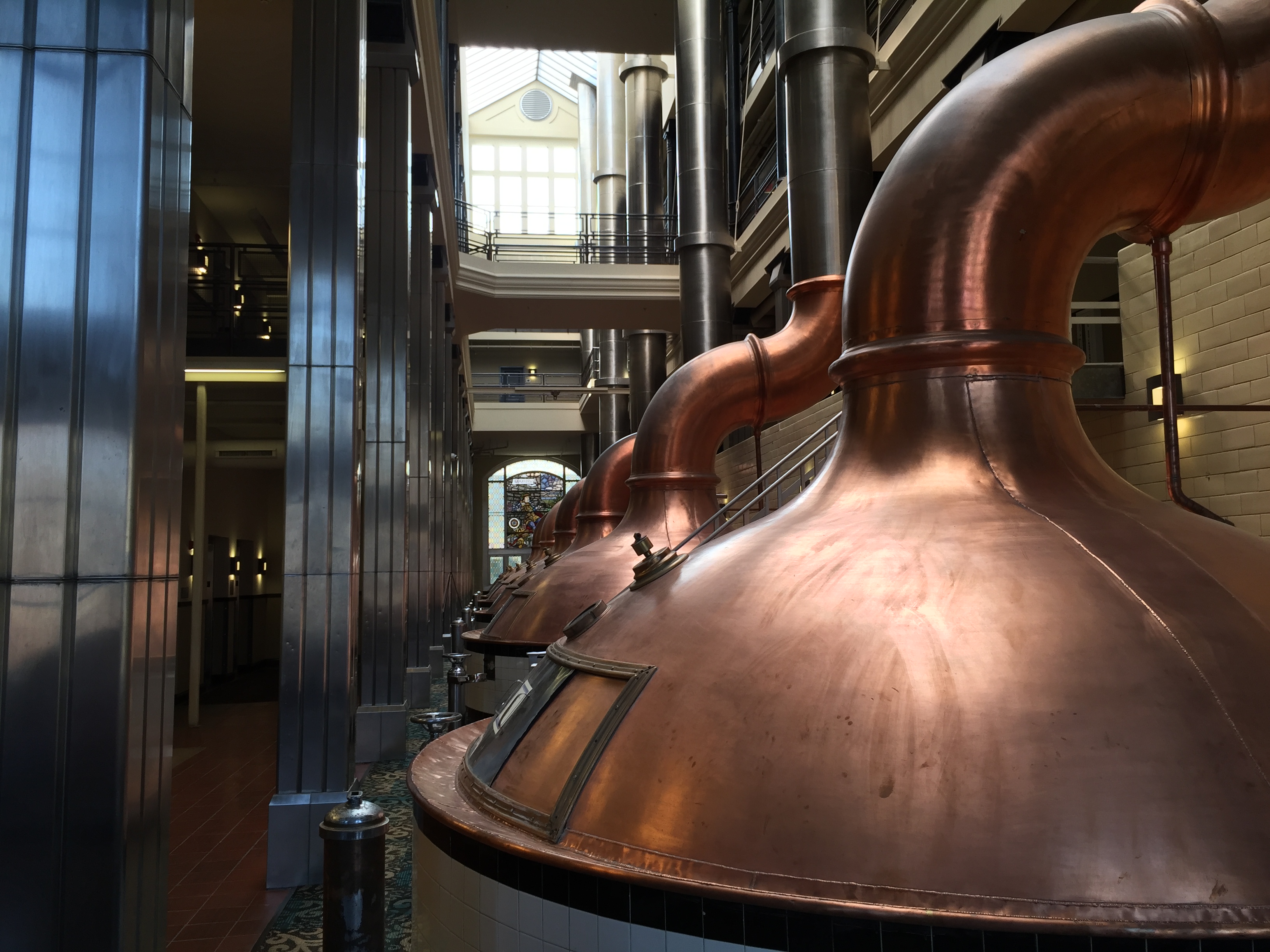
Those famous brew kettles.
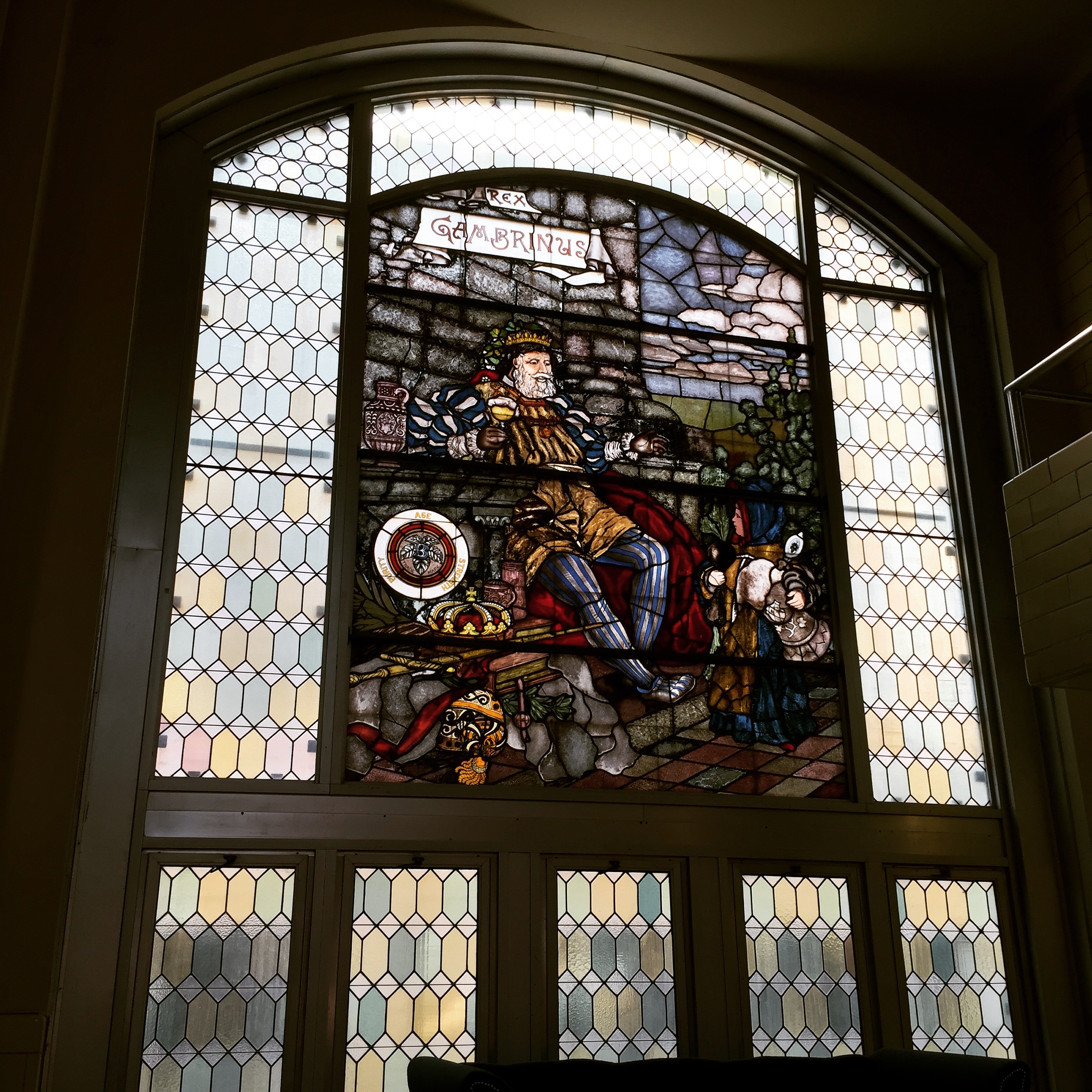
King Gambrinis look on.
Prior to the stroll through the Brewhouse Inn, we all took part in a tour of the complex’s other buildings, including Blue Ribbon Hall, the Great Hall, the Great Courtyard, and the original Visitors Center, all part of an assemblage of cloistered Gothic Revival buildings. A larger than life-sized statue of a gleeful King Gambrinis stands in the middle of Great Courtyard; this depiction, however, looked awfully similar to the mute Burger King in those commercials a few year back. But, the eerie similarity did not prevent most of us in the tour to take our Facebook and Instagram pictures with the statue — the usual pose being one arm around the King and the other holding an on-the-house PBR. We were all merry.
For me, one highlight of the Brewery visit was listening to the tour guide’s presentation on the history of the Pabst Brewery in Blue Ribbon Hall. According to the guide, Pabst Brewery’s growth and Milwaukee’s rise as a beer brewing capital, was largely due to the Great Chicago Fire of 1871. How were all those Chicagoans going to get their beer after the local Chicago breweries all burnt down? Duh. The second highlight came right after the tour guide talk and before we partook of more PBR in the Blue Ribbon Hall. Jim Haertel, one of the prime suspects and investors in rehabilitating the Great Hall and other as parts of the visitor center cloister, provided an inspirational preservation pep talk. Even though he runs the place, his title is not CEO, executive director, nor general manager. It’s “Chief Steward.” He sees himself less as someone running a business and overseeing employees and more as a conscientious and devoted caretaker of a significant part of Milwaukee’s history and built heritage. Hear, hear, I’ll drink more PBR to that! We were wondering in Blue Ribbin Hall, is there a way to clone Mr. Haertel?
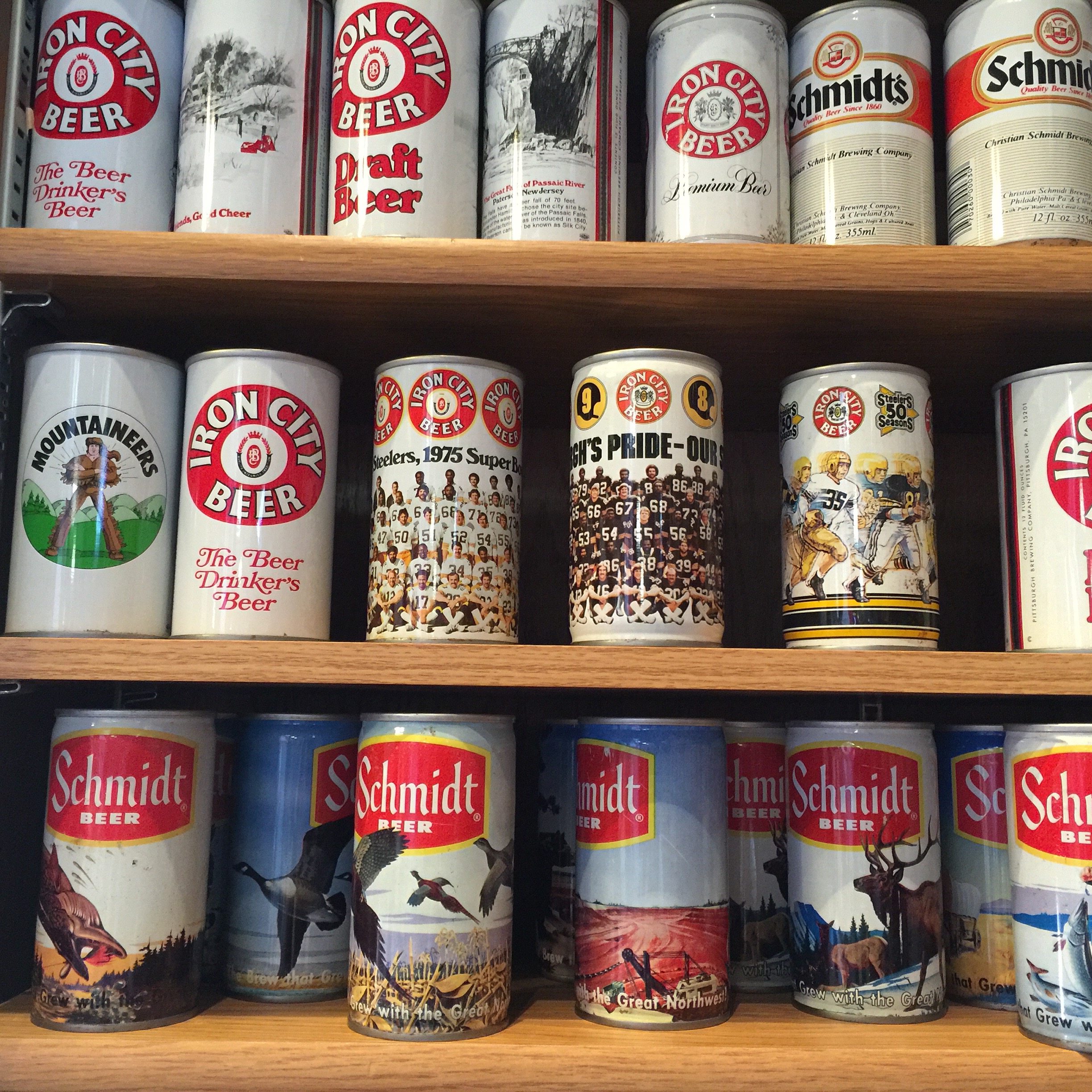
Pabst Brewery Visitor Center Gift Store – the beers of long ago.
Well, Saturday was great. It was good to see Milwaukee the second time around and to catch up with some good Main Streeters again after a year’s absence from the conference. The conference sessions during the rest of the week provided a great line-up of placemaking and arts-related Main Street discussions, which I found especially useful given Lakota’s current work in the North Topeka Arts District in Topeka, Kansas, and always uplifting talks on Main Street success stories from communities big and small. After all these years, the Conference continues to keep me, and many others I’m sure, motivated to make preservation-based downtown economic development a portent force for community sustainability for years to come. It definitely was as good as and even better than the 1993 edition.
Maybe my new laptop password should be “MainStreetNow 2017.” You think?
